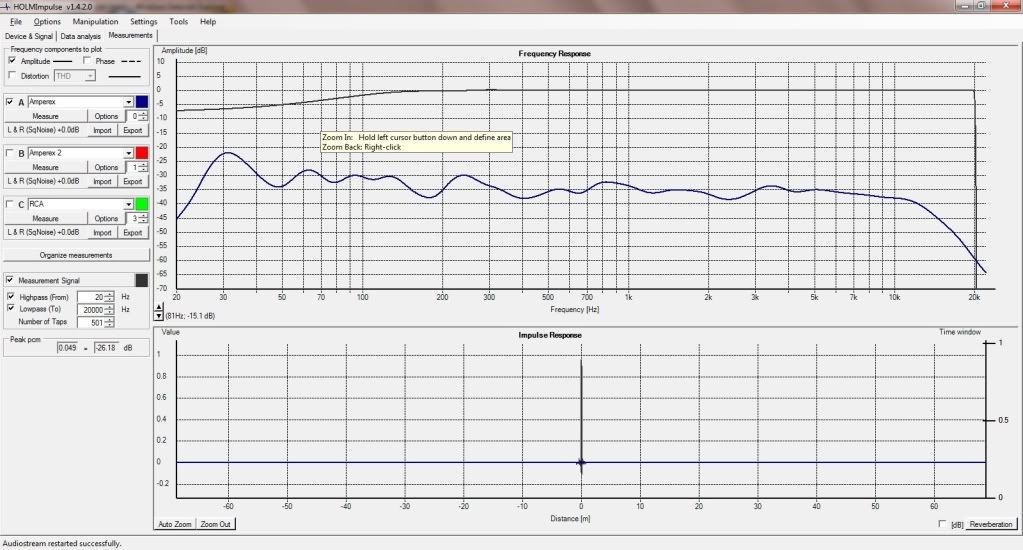I guess that I owe everyone a final review now that everything is finalized and I've gotten some listening time. I spent some time setting the JL back up, testing, comparing, and then finally setting the SVS back up and tweaking to perfection via placement and miniDSP. Here are my final findings:
Physical:
The SVS fit/finish is pretty good. The veneer is decent, everything looks well assembled, and it feels like a quality piece. Cabinet inertness based on the knuckle test is good, but not in the same planet as the JL... the JL is much more dense and dead. JL's fit/finish may be just slightly better, but it isn't offered with any veneer so comparison isn't really fair. My F212 has the satin finish and it is very well done and durable. There is not a scratch on it anywhere after 2 years of use where as the SVS has one very small knick in the veneer already near a corner. Bummer. The JL also has pretty lame post mount grills vs the SVS's much nicer internal magnet design. Of course, the dual PB13 take up very significantly more floor space.... even a single PB13 does. If I was choosing between the two based on appearance and feel alone, I would definitely choose the JL, but not by a large margin.
Performance:
In my room, the dual PB13 by far exceed the capabilities of the F212 at nearly every metric. I would bet that a single PB13 probably would, too. The JL is a bit easier to set up being that it has built in room correction, but honestly it is a poor implementation at best. The built in PEQ filters of the SVS subs allow for significantly improved frequency response over the autocorrection in the JL, but it obviously does require external measurements and tweaking knowledge. I was able to get very significantly better response (with just Audyssey and the built in correction) with the dual SVS vs the JL. The JL ended up being +/- 10db or so where as the SVS were more like +/- 3db. For output, the F212 was made to look silly. In my room, it was making mechanical noise at 84db @ 18hz. The SVS did 92db at the same frequency without issue and I stopped turning it up because it had already outperformed the JL by a large margin. I could push the JL to mechanical noise up until about 25hz and never did the same with the SVS. Either way, the trend continued and the SVS had more output all the way up until around 60hz or so where they were close. The SVS did nose dive hard after 100hz in my room where as the JL played out flatter for longer, but I don't crossover high enough to care about that difference. The decay/waterfall timing between the two were very similar with the SVS actually outperforming the JL at some points, but for the most part the difference between the two was minimal in that regard.
Listening:
Again, the SVS just make the JL look silly. The SVS are better, period. For music listening, notes are more well defined and differentiated between one another. I attribute this to the significantly better frequency response. The instruments are more properly placed in the air, likely because the room is more equally loaded with 2 subs vs one fighting the odd layout of my room. There is no noticeable ringing going on nor any noises that one could associate with the ported design. Punchiness was very similar between the two in music. For movies, the SVS's better response and greater dynamics just blow away the JL. Everything seemed to punch harder, deeper, more articulately, with more impact, and without calling attention to itself. I never thought that the JL was compressing content, but it definitely was in the sub 30hz range.
I didn't think it would end this way, but the SVS are without a doubt a better product. They might fall slightly behind in aesthetics and obviously require a lot more space, but they're far superior in performance and I think this more than makes up for the short comings. I paid about $1000 more for my single JL than I did my pair of SVS subs and honestly, that value was nowhere to be found. I received good customer service from SVS, the subs were shipped quickly and were well packed, and I have no reason to believe that they'll provide anything but the best customer service going forward. Customer service is the reason that I started investigating other companies in the first place, so I hope that this holds true.
The SVS is the better buy. For those in the future reading this, take the leap. They're a good product and a good company to work with. SVS, if you're reading this, I want a free t-shirt or something. lol









